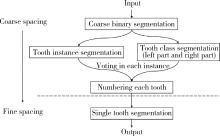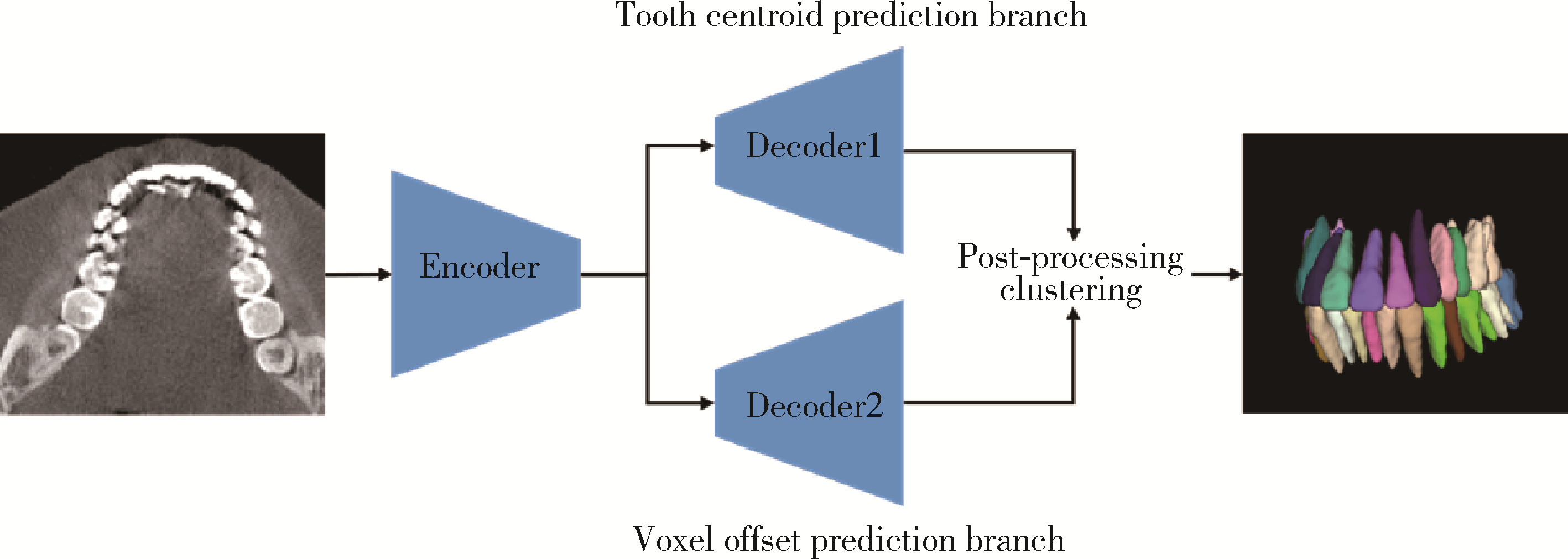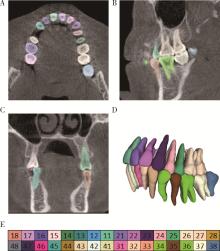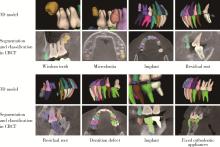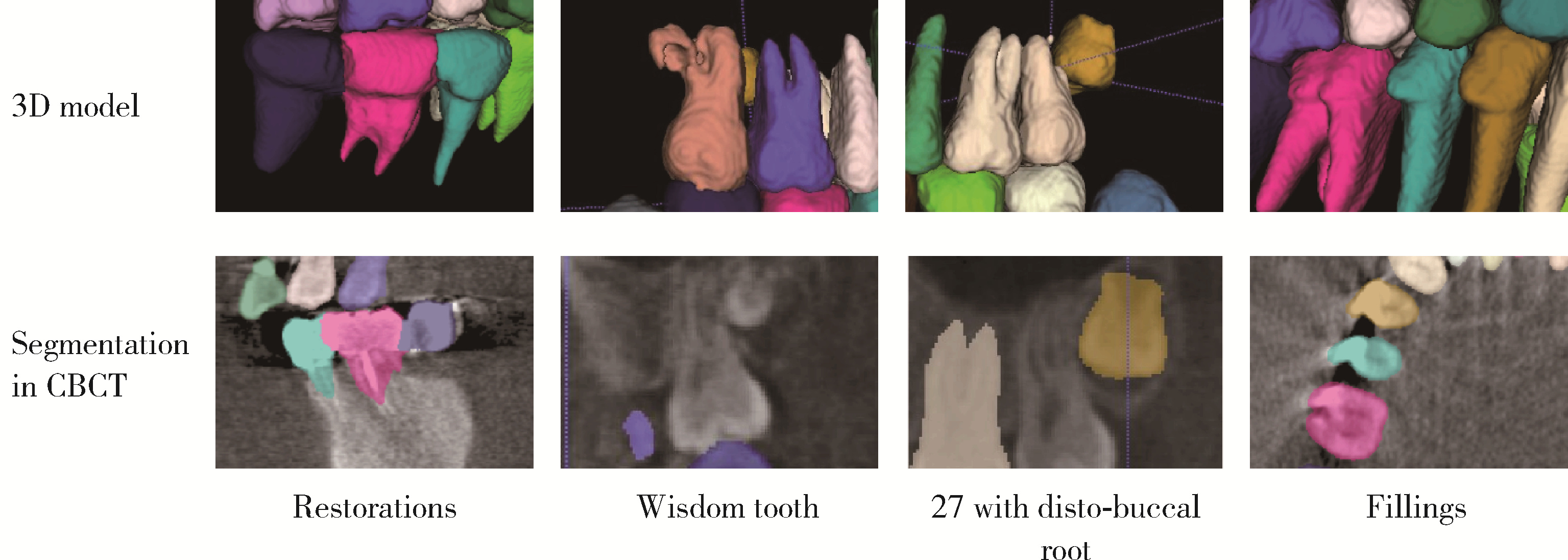Journal of Peking University (Health Sciences) ›› 2024, Vol. 56 ›› Issue (4): 735-740. doi: 10.19723/j.issn.1671-167X.2024.04.030
Previous Articles Next Articles
Tooth segmentation and identification on cone-beam computed tomography with convolutional neural network based on spatial embedding information
Shishi BO1,2,Chengzhi GAO2,*( )
)
- 1. Department of General Dentistry Ⅱ, Peking University School and Hospital of Stomatology & National Center for Stomatology & National Clinical Research Center for Oral Diseases & National Engineering Research Center of Oral Biomaterials and Digital Medical Devices, Beijing 100081, China
2. Department of Dentistry, Peking University People' s Hospital, Beijing 100044, China
CLC Number:
- R780.1
| 1 |
Liao FZ , Liang M , Li Z , et al. Evaluate the malignancy of pulmonary nodules using the 3-D deep leaky noisy-OR network[J]. IEEE Trans Neural Netw Learn Syst, 2019, 30 (11): 3484- 3495.
doi: 10.1109/TNNLS.2019.2892409 |
| 2 |
Long J , Shelhamer E , Darrell T . Fully convolutional networks for semantic segmentation[J]. IEEE Trans Pattern Anal Mach Intell, 2017, 39 (4): 640- 651.
doi: 10.1109/TPAMI.2016.2572683 |
| 3 | Ronneberger O, Fischer P, Brox T. U-Net: Convolutional networks for biomedical image segmentation: International conference on medical image computing and computer-assisted intervention[C]. Cham: Springer, 2015. |
| 4 | Neven D, Brabandere BD, Proesmans M, et al. Instance segmentation by jointly optimizing spatial embeddings and clustering bandwidth: 2019 IEEE/CVF conference on computer vision and pattern recognition (CVPR)[C]. Long Beach, CA: IEEE, 2019. |
| 5 |
Pei YR , Ai XS , Zha HB , et al. 3D exemplar-based random walks for tooth segmentation from cone-beam computed tomography images[J]. Med Phys, 2016, 43 (9): 5040- 5050.
doi: 10.1118/1.4960364 |
| 6 | Patil S , Kulkarni V , Bhise A . Algorithmic analysis for dental caries detection using an adaptive neural network architecture[J]. Heliyon, 2019, 5 (5): e1579. |
| 7 |
Zhang KL , Wu J , Chen H , et al. An effective teeth recognition method using label tree with cascade network structure[J]. Comput Med Imaging Graph, 2018, 68, 61- 70.
doi: 10.1016/j.compmedimag.2018.07.001 |
| 8 |
Hosntalab M , Aghaeizadeh ZR , Abbaspour TA , et al. Classification and numbering of teeth in multi-slice CT images using wavelet-Fourier descriptor[J]. Int J Comput Assist Radiol Surg, 2010, 5 (3): 237- 249.
doi: 10.1007/s11548-009-0389-8 |
| 9 |
Hwang JJ , Jung YH , Cho BH , et al. An overview of deep learning in the field of dentistry[J]. Imaging Sci Dent, 2019, 49 (1): 1- 7.
doi: 10.5624/isd.2019.49.1.1 |
| 10 |
Chen H , Zhang KL , Lyu PJ , et al. A deep learning approach to automatic teeth detection and numbering based on object detection in dental periapical films[J]. Sci Rep, 2019, 9 (1): 3840.
doi: 10.1038/s41598-019-40414-y |
| 11 |
Miki Y , Muramatsu C , Hayashi T , et al. Classification of teeth in cone-beam CT using deep convolutional neural network[J]. Comput Biol Med, 2017, 80, 24- 29.
doi: 10.1016/j.compbiomed.2016.11.003 |
| 12 | Cui ZM, Li CJ, Wang WP. ToothNet: Automatic tooth instance segmentation and identification from cone beam CT images: 2019 IEEE/CVF conference on computer vision and pattern recognition (CVPR)[C]. Long Beach, CA: IEEE, 2019. |
| 13 | He KM, Zhang XY, Ren SQ, et al. Deep residual learning for image recognition: 2016 IEEE conference on computer vision and pattern recognition (CVPR)[C]. Las Vegas: IEEE, 2016. |
| 14 | Dentistry-designation system for teeth and areas of the oral cavity: ISO 3950: 2009[S/OL]. [2016-03-01]. https://www.iso.org/standard/68292.html. |
| 15 |
Dice LR . Measures of the amount of ecologic association between species[J]. Ecology, 1945, 26 (3): 297- 302.
doi: 10.2307/1932409 |
|
||
